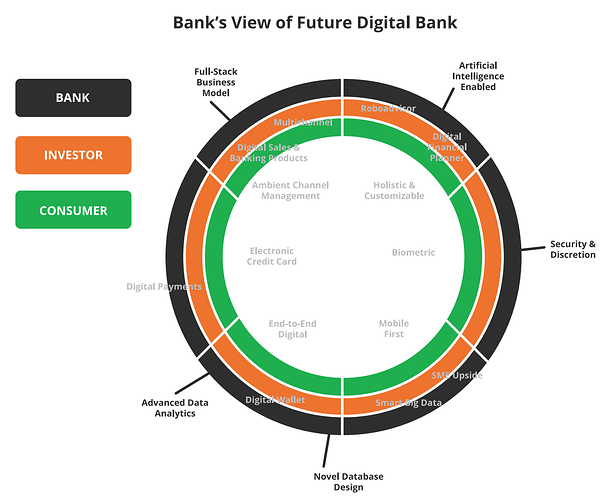Hierarchical Temporal Memory Model for Intelligence
HTM is based on neuroscience principles drawing upon physiological interaction of pyramidal neurons in the neocortex of the mammalian human brain.
At the core of HTM are learning algorithms that can store, learn, infer, and recall high-order sequences. Unlike most other machine learning methods, HTM continuously learns in an unsupervised time-based patterns in unlabeled data.
HTM is robust to noise, and has high capacity it can learn multiple patterns simultaneously. When applied to computers, HTM is well suited for prediction, anomaly detection, classification, and ultimately sensorimotor applications.
How can distributed application developer leverage concepts such as HTM?
Sharing some thoughts to stimulate this discussion thread.
Someone like myself who take keen interest in paradigm shifting FinTech trends, drawing inspiration from online resources such as Digital Bank Manifesto, stare at this image for hours pondering, imagining Digital Banks of Future (DBF).
Following thoughts surface in ones mind to assess promise of holochain and HTM in following context:
- DatabaseDesign - schema of datum as hAPP - could make users to own, maintain and be responsible for their own data backed with hashed copy on holo.cloud thus enabling peer to pay or offer credits - to peers they trust without verification and verify credit worthiness of those they arent familiar with.
- DataAnalytics - distributed schema with public accounts - where transactions are pushed out every time by design to be captured by information and advice service providers i.e. DBF who can make sense of that to offer services.
- ArtificialIntelligence - exponential nature of information - both for peer to access, as well as service provider to process. Thus meriting constructs offering large scalability built in it. This is where HTM offers huge advantages to meet provider’s need of understanding “Patterns” to offer advice and services, while peers need “Global Views” patterned for simplicity.

